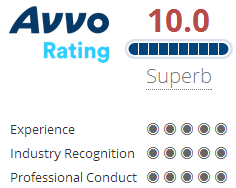Call Now 323-464-6700 for a Free Consultation
Law Offices of Jonthan Franklin - Blog
Typically, DUI checkpoints are lawful in California. A police officer can stop and investigate you for driving under the influence of alcohol or drugs at a DUI checkpoint. Legally, these checkpoints are treated as other administrative inspection points, like airports, where legal screening is done to ensure safety. Thus, they do not violate the Fourth Amendment, which requires the police to have probable cause for stopping and investigating a person for drunk or drugged driving.
However, a DUI checkpoint must meet all the legal conditions to be considered legal. Otherwise, you can challenge your arrest after a DUI investigation at an illegal checkpoint. You can speak to a skilled attorney if you feel being stopped and investigated at a DUI checkpoint is unlawful. They will investigate the checkpoint and everything that happened to advise you on your legal options.
The police set DUI checkpoints at strategic locations throughout California to investigate motorists for DUI and make arrests if need be. This is one of the measures the state has in place to prevent drunk driving and stop all the resulting consequences. When the police set a DUI checkpoint, they stop motorists at random for DUI investigation. They must have criteria by which they stop vehicles passing through the checkpoint. If you are suspected of drunk or drugged driving, the officers will administer tests to obtain evidence. They will arrest you if they are sure that you were driving while under the influence.
When setting up a DUI checkpoint, officers section a part of the main road to allow some vehicles to pass while stopping others for investigation. They allow vehicles to use one lane for ease of investigation. If you are stopped, you must pull over by the roadside. The officer could ask you to roll the window down and answer their questions. They could ask you to produce your license, registration, and other general questions to gauge how you answer them. During that time, the officer will check your behavior and coordination and listen to your speech to determine your sobriety.
If you show signs of intoxication, the officer will ask you to step down from the vehicle. They could give you a few tests to perform by the roadside to determine whether you are under the influence. If you pass the field sobriety tests, the officer can allow you to proceed where you were going. However, you will be arrested if officers suspect that you were intoxicated.
You should cooperate when stopped at a DUI checkpoint. This will make police investigations easy and quick. Besides, being uncooperative can heighten the officer’s suspicion that you are intoxicated. Failing to cooperate could also result in a DUI arrest. Even though you can fight the arrest later, it will waste your time and appear on your criminal record.
When an officer stops you at a DUI checkpoint, it does not mean that you are driving while intoxicated. Remember that stops that happen at DUI checkpoints are usually random. Thus, you can proceed after a few questions or be retained for further investigations. The police will arrest you at a DUI checkpoint if they observe the following:
- If you are nervous when handing over your driver’s license and vehicle registration
- If they smell alcohol from your breath or vehicle
- If you have challenges answering the questions asked
- If they notice drugs, drug paraphernalia, or alcoholic drinks in your car
- If your speech is slurred, or your eyes are watery or reddish, or the officer notices other signs of intoxication or physical impairment
Any of these signs will be the officer’s probable cause for your arrest, which they must demonstrate during your trial. Once the officer places you under arrest, they will read your Miranda rights and take you to the station or booking. You could be required to take blood or breath to determine the amount of drugs or alcohol in your system. A blood test will also show the exact drugs in your system.
Although you can legally decline a breath or blood test before a DUI arrest, you cannot do so after an arrest. The implied consent law compels you to submit to DUI testing after an arrest. Failure to do so can result in grave consequences, including a heightened DUI sentence.
Before arresting you at a DUI checkpoint, the officer can ask you to perform a few field sobriety tests. Although you can legally decline to submit to these tests, they will not stop the officer from investigating or arresting you for DUI if there are clear indications that you are intoxicated. The officer could also request a mouth swab to determine if you have drugs in your system or a preliminary screening for alcohol. Remember that cooperating with the officers after being stopped at a DUI checkpoint could help your situation if, indeed, you are operating while intoxicated.
If the officer finds no incriminating evidence after all the tests, they will allow you to go without DUI charges. However, you could face charges under the following statutes if the police have a reason to think that you were operating a vehicle while intoxicated:
- Driving while intoxicated with alcohol under VC 23152(a)
- Driving with a blood-alcohol concentration level of .08% or higher under VC 23152(b)
- Driving while under drug’s influence, or DUID under VC 23152(f)
- Underage DUI
- DUI by commercial, taxi, ride-sharing or limo driver
The law has eight functional rules that determine the legality of a DUI checkpoint. Since there are usually no minimum requirements for a roadblock to meet the set criteria, courts must set a balance when judging related cases. For example, the judge must determine the public interest in preventing DUI-related accidents and incidents in the state and the kind of intrusion the police subjects motorists to when conducting DUI investigations at these checkpoints.
Remember that DUI checkpoints are typically lawful in California. However, how the police set the checkpoints or conduct investigations could make them illegal. Thus, the police must follow stringent procedures under the constitution when setting checkpoints. Here are the factors that a judge will consider when determining the legality of a particular DUI checkpoint:
Before setting up a DUI checkpoint, police officers in a particular jurisdiction must appoint a supervising officer to take charge. The officer will be in charge of all decisions about that checkpoint. This officer should not be one of the field officers appointed to handle various tasks at the checkpoint. They should have particular roles, including deciding how, when, and where the checkpoint will be set. They could also appoint officers to work with at the checkpoint. Having a supervisor or someone in charge reduces the likelihood of field officers making capricious or arbitrary enforcement that could violate motorists’ constitutional rights.
Before setting up the DUI checkpoint, field officers, under the supervision of the checkpoint supervisor, must establish neutral criteria for stopping motorists for DUI investigation. The requirements must stay the same even when circumstances change at the DUI checkpoint. The supervisor must use neutral selection criteria to establish this. For example, they can agree to stop every fourth or two vehicles after five.
Officers must carefully avoid profiling drivers who appear a particular way, are of a specific age, or have a particular vehicle model, which could result in legal problems. If a motorist feels that they were profiled at a DUI checkpoint, they can sue the police department or cite that the checkpoint was illegal. This will create problems for all arrests the officers make at the checkpoint.
The supervisor must carefully select where to establish a DUI checkpoint for effectiveness. Remember that the essence of a checkpoint is to discourage drunken or drugged driving. This is done by stopping and arresting drivers found operating vehicles while intoxicated. However, this must happen where officers will likely experience great success, like on a busy highway. The supervisor can select a location where most DUI arrests have occurred in the recent past. If more drivers are arrested in such a location, more people will be careful not to drive while intoxicated in the future.
The supervisor must ensure the roadblock is safe for motorists and officers conducting DUI investigations. Thus, the roadblock should be in a secure location. The supervisor must also consider the traffic patterns of the chosen area and ensure that it is busy. The street layout must also make it easy for motorists to pull over without impeding traffic. There should be sufficient space by the road for motorists to pack and more space to perform field sobriety tests for suspected DUI offenders.
Additionally, the checkpoint’s location should be visible to oncoming drivers. It should not be around a corner or concealed in any way.
Using reasonable judgment, the supervisor must set an ideal time and duration for DUI investigations. They can investigate to determine the timeframe within which most drivers are arrested for DUIs so they can plan their time correctly to ensure that the checkpoint meets the set objective. For example, setting a DUI checkpoint in the morning or early afternoon will likely not yield good results as opposed to setting it in the evening after working hours. Most people enjoy their drink after work. During a weekday, you will expect most of them to return home a few hours after nightfall. However, during the weekends, the checkpoint’s duration can extend to late hours.
Motorists should know they are approaching a police roadblock before an officer flags them down. This helps in reducing surprise and fear. There should be a warning sign to prepare motorists as they pass. If an officer flags them down, the sign should show them what to expect. There should be flashlights for the police, mainly because these checkpoints are set up at night. There should also be visible police cars around the checkpoint. Officers should be in their uniform. When an officer stops a motorist, the motorist should know that this is an officer on duty.
A DUI checkpoint is not meant to delay motorists in any way. The police must be prepared to take the least time possible with motorists after stopping them for a DUI investigation. Officers should only prolong the investigation if they suspect a motorist of DUI. Otherwise, they should let drivers proceed immediately after answering a few questions if they do not appear impaired. A few minutes are enough for a trained law enforcement officer to determine if a driver is intoxicated. They should be able to check the physical signs of impairment as the driver answers questions and hands over their license and registration.
A prior advertisement of a DUI checkpoint is a legal requirement to ensure that the public knows what will happen at a particular location and time to avoid surprises. Although a surprise DUI checkpoint would be ideal to curb drunk and drugged driving, it is illegal. Officers must advertise a checkpoint at least a week before it is set up in local newspapers, websites, and news stations.
An arrest at a legal DUI checkpoint can result in severe penalties if a court finds you guilty of driving while intoxicated. However, you can fight your charges if you believe your arrest or the checkpoint was illegal. An illegal arrest will occur if the police lack probable cause to arrest you. You should not face criminal charges after an arrest at an illegal checkpoint. A skilled DUI attorney will compel the court to dismiss your charges.
If you are doubtful about the legality of a Los Angeles DUI checkpoint where your arrest occurred, our attorneys at Jonathan Franklin DUI Attorney can help. We will investigate the checkpoint to determine whether it meets all the listed criteria of a legal checkpoint. We will also investigate the circumstances of your arrest, looking for evidence to support your defense. Call us at 323-464-6700 to learn more.
Most people assume that DUI only refers to driving under the influence of alcohol. However, California law also criminalizes driving under the influence of drugs. You can face an arrest and charges for DUI if you operate a vehicle while under the influence of illegal narcotics or prescription medication like sleeping pills.
When proving your liability for driving under the influence of sleeping pills, the prosecution must prove all the elements of the crime. It means that it must be clear that you were operating a vehicle. Additionally, your blood test should show a concentration of sleeping pills high enough to impair your driving conduct.
Driving under the influence of sleeping pills is a misdemeanor. A conviction for the offense can result in jail time, fines, and a driver's license suspension. Additionally, the conviction can remain on your record for up to ten years. If you face charges for DUI sleeping pills, you will require the guidance of a skilled attorney to fight the charges.
California Vehicle Code 23152(f) makes it unlawful to operate a vehicle under the influence of drugs. These drugs include illegal narcotics and prescription medications that can cause impairment. Common examples of sleeping pills that could cause driver impairment include:
- Ambien
- Butisol sodium
- Rozerem
- Lunesta,
- Sonata,
- Dalmane
- Carbrital,
- Doral,
- Prosom,
A traffic officer will stop your vehicle at a DUI checkpoint or when they have probable cause to believe you were driving under the influence.
The officer can then administer field sobriety and blood tests to confirm their suspicions. Before you face a conviction for DUI of sleeping pills, the prosecution must prove these elements:
- You drove a vehicle. The prosecution must prove that you operated a vehicle when establishing your liability under VC 23152(f). Sitting behind the wheel of a parked vehicle does not count as driving under California law.
- You were under the influence of sleeping pills or a combination of sleeping pills and alcohol or other drugs. The prosecution will use the result of your blood test to prove that you were under the influence. The blood test will show the concentration of the substances in your system.
- The sleeping pills impaired your driving. The prosecution must prove that the sleeping pills caused a level of impairment that affected your ability to drive safely.
Driving under the influence of sleeping pills is a misdemeanor. A conviction for the offense attracts severe legal and collateral consequences. The exact penalties you face will vary depending on your criminal history:
You will face the following penalties for your first conviction for DUI of sleeping pills:
- A jail sentence of up to six months
- Up to $1000 in fines
- Driver’s license suspension for six months
- Misdemeanor probation
- Completion of a 3- to 9-month DUI education program
The prosecution will charge you as a second-time offender if you have at least one prior conviction for DUI. Your conviction in this case will result in the following punishment:
- A jail sentence of up to one year with 96 hours of mandatory incarceration
- Fines that do not exceed $1000
- A DUI education program of up to six months
- A two-year driver’s license suspension
- Summary probation
The court considers your DUI with sleeping pills a third offense if you have two prior DUI convictions on your record. A conviction for a third offense will attract the following penalties:
- Up to one year in jail with a mandatory minimum sentence of 120 days
- Fines of up to $1000
- Summary probation
- Up to three years of driver's license suspension
In addition to incarceration and fines, a conviction for DUI sleeping pills can result in a suspension of your driver's license. There are two main types of driver's license suspension. They include:
After your arrest, the arresting officer will take away your driver's license and issue you with a notice with which you can drive for up to thirty days. Within the first ten days of your arrest, you must schedule and attend a DMV hearing. At this hearing, you will defend against your license suspension.
A DMV hearing is an informal hearing presided over by a DMV officer. The burden of proof needed at this hearing is lower than required in a DUI criminal case. At your DMV hearing, you can present evidence against the allegations of DUI of sleeping pills. Additionally, you can cross-examine the witnesses presented by the proscenium.
If you win the DMV hearing, you can continue to drive your vehicle while you await the outcome of your criminal case. If you lose your DMV hearing, the Department of Motor Vehicles will suspend your license.
The court-imposed license suspension occurs after your conviction under Vehicle Code 23152(f). The suspension period ranges from six months for a first offense to three years for a third and subsequent offense.
If your driver's license is suspended, you can petition the court for a restricted license. The restricted license allows you to drive to school, work, and DUI appointments.
Aggravating factors are circumstances that make your offense more serious. In the presence of these factors, a criminal defendant will face harsher punishment for their offense. Typical aggravating factors in your case for DUI of sleeping pills include:
- A high concentration of drugs in your blood. If your blood tests reveal a high concentration of the active ingredients in sleeping pills, this can aggravate the case. The higher the level of the drugs in your system, the higher the likelihood of your impairment.
- Reckless driving behavior. A traffic officer will observe your behavior while you drive and after the DUI stop. If you exhibited erratic driving, you can face penalties for aggravated DUI. Evidence of reckless behavior implies a higher level of impairment and increases the seriousness of the offense.
- Accident or injury. Driving under the influence of sleeping pills impairs a driver's ability to operate safely. Causing an accident or injury is an aggravating factor that could result in severe penalties. California Vehicle Code 23153 allows for felony charges if a DUI leads to injury. A DUI conviction can result in prison time and hefty fines.
- A minor passenger in the vehicle. Having a child under fourteen years in the car during the DUI incident is an aggravating factor. California courts may impose stricter penalties when minors are involved. You could also face additional charges for child endangerment.
- Failure to Cooperate. A traffic officer cannot force you to submit to a field sobriety or blood test. However, refusing the chemical tests can result in additional penalties.
In California, DUI charges extend beyond alcohol to include prescription medication and narcotics. Stakes are high for defendants facing criminal charges for driving under the influence of sleeping pills. Besides serving time in jail, you risk severe collateral consequences after a conviction for the offense. With the guidance of a skilled attorney, you can present the following defenses in your case:
The prosecution must prove you were driving when establishing your liability under VC 23152(f). Under California DUI law, driving means being behind the wheel of a moving vehicle. You can avoid a conviction for this offense by arguing that you were not driving.
Your no-driving defense could apply in cases where the officer finds you sleeping or sitting inside a parked vehicle.
The prosecutor must prove your intoxication before securing a conviction for DUI. One of the primary defenses against DUI charges for sleeping pills is proving that you were not impaired at the time of driving.
There is no legal limit for sleeping pills and other prescriptions. However, California law requires your intoxication to be enough to impair your driving conduct. The prosecution must prove that the sleeping pills significantly impaired your ability to drive safely.
You can build this defense by arguing that you did not exhibit any signs of impairment at the time of the arrest. Additionally, you could present evidence showing that your mental and physical capabilities were not compromised. You can prove a lack of impairment by presenting testimony from a medical expert or evidence of field sobriety tests you passed.
Another defense that may apply in this case is that you were unaware of the extent of impairment caused by the medication. Certain medications can have varying side effects. These effects could impair their ability to drive.
You can avoid a conviction for DUI of sleeping pills if you can show that you did not anticipate the drug effects that caused impairment. However, you may find it challenging to establish this defense if you ignore warnings from your healthcare provider.
Your field sobriety test results may form the basis for your arrest for DUI. After your arrest, the officer will order a blood test to determine the components and concentration of drugs in your body. The blood test results are critical in establishing your liability for DUI.
Blood tests used to detect the presence of drugs can give inaccurate results. These errors may result from improper handling of the samples or in the testing procedure. By raising doubts about the reliability of test results, you can reduce the likelihood of a conviction or negotiate for lesser punishment.
A traffic officer must have probable cause to stop your vehicle for a DUI investigation. Probable cause is the reasonable belief that you were driving a car under the influence of alcohol or drugs. A traffic officer can form probable cause by observing your driving. Acts like dangerous changes of lanes, avoiding red lights, and swerving can create probable cause for a DUI stop.
An officer violates your rights by stopping your vehicle without probable cause. Another violation of your constitutional rights is failing to read your Miranda rights. The Miranda warning informs you of your right to remain silent and to obtain legal representation. If an officer interrogates you before reading your Miranda rights, you can request the court to throw out the evidence they collected from you.
In many cases, individuals take sleeping pills as a prescription from a licensed physician. If you took the sleeping pills following your doctor’s directions, you can use this as a defense. The defense would argue that you are not liable for DUI because you followed medical guidance. However, this defense does not guarantee acquittal.
To prevail with this defense, you must provide documentation showing that the medication was prescribed to you by a healthcare provider. Additionally, you must prove that you took it correctly. The court may fail to accept your defense if the prescription was for a medication known to impair driving.
You can face an arrest and charges for driving under the influence of sleeping pills if you operate a vehicle with a significant concentration of these drugs in your blood. A traffic officer can stop you at a DUI checkpoint or when they notice signs of DUI in your driving. The officer may then conduct a further assessment before arresting you. After the arrest, you may need to submit to a blood test, which forms a basis for your DUI charges.
If there are any aggravating circumstances in your case, the prosecutor will charge you with a misdemeanor for this offense. The consequences of a conviction for driving under the influence of sleeping pills are severe. They include incarceration, fines, probation, and driver's license suspension. The conviction will also stain your criminal record, which could impact your personal and professional lives.
Therefore, if you or a loved one faces charges for this offense, you must hire and retain a skilled DUI attorney. At Jonathan Franklin DUI Attorney, we offer expert legal insight for our clients battling drunk driving and drugged driving charges in Los Angeles, CA. Contact us at 323-464-6700 to discuss your case.
When you face DUI charges, you will likely wonder about driving under the influence (DUI) and driving while impaired or intoxicated (DWI) offenses and their differences. In California, DUI and DWI have no distinction, but in other states, the two are separate offenses. It is not incorrect to refer to your DUI as DWI in California, although the abbreviation for DUI aligns more with the court terminology for driving while impaired.
DUI is the abbreviation for driving under the influence. The offense occurs when you operate a car while intoxicated by alcohol, controlled substances, or both. Many states in the country, like California, Nebraska, and Montana, use DUI to mean drugged or drunk driving. Almost 25 states refer to drinking and driving as DUI.
DWI is the abbreviation for driving while intoxicated or impaired. The acronym is also used to mean drunk or drugged driving. States that call these offenses DWI include New Hampshire and Missouri.
Several other acronyms for impaired driving exist apart from DWI or DUI. Some states use phrases like:
- Operating while impaired or intoxicated (OWI)
- Operating under the influence (OUI)
- Operating a motor vehicle while impaired (OMVI)
Almost all states use OWI, OUI, DUI, or DWI interchangeably. While the court or law enforcement can use one terminology, you are not incorrect in using any other phrase to refer to the offense, as they all have the same meaning.
In New York and Oklahoma, DWI and DUI are two separate offenses. In these states, the phrase that refers to drinking and driving depends on the blood alcohol content (BAC) in your bloodstream during arrest.
The acronym DUI is used in per se DUI when your BAC during driving exceeds the designated limit. DWI is utilized when BAC is within the lawful BAC, but the stopping officer believes you are intoxicated or impaired and cannot drive. With DWI, the court does not focus on the BAC but rather the impairment and whether, during arrest, you could operate the car like a sober person.
In Oklahoma, DUI refers to operating a car with a BAC of at least .08%. In contrast, DWI refers to operating a vehicle when impaired or intoxicated, regardless of the BAC. Therefore, you could face DWI charges in the state even when your BAC is within the designated limit if the stopping officer deems you to be too intoxicated to drive. Nevertheless, you can only face a DUI count if your BAC exceeds the specified limit of .08%.
The punishment for the two offenses in Oklahoma also differs. DWI is the lesser violation, meaning it carries lesser penalties. Prosecutors charge DWI as a misdemeanor, and upon conviction, the legal penalties are as follows:
- No more than half a year of jail incarceration, between $100 and $500 in financial court fines, and thirty days of Driver's License (DL) suspension for a first DWI offense.
- A second DWI violation attracts half a year of jail incarceration, between $100 and $500 in monetary court fines, and six months of DL suspension.
- A third or successive DWI attracts six months of incarceration in county jail, fines between $100 and $500, and at most twelve months of DL suspension.
In contrast, DUI charges are based on BAC levels, and a guilty verdict attracts harsher penalties. The penalties include:
- No more than twelve months of incarceration in county jail, at most $1,000 in court fines, and no more than six months of DL suspension if you are a first-time offender.
- As a second-time offender, the penalties include twelve to sixty months of incarceration, at most $2,500 in court fines, and no more than twelve months of DL suspension.
- The penalties for a third or successive DUI include twelve to one hundred and twenty months of incarceration, at most $5,000 in monetary court fines, and no more than 36 months of DL suspension.
New York adopts the same law. However, the offense is DWI when the BAC exceeds the designated limit. The term used in court and by law enforcement is driving while ability impaired (DWAI) if the BAC is below the designated limit. Still, the stopping officer deems you too impaired or intoxicated to operate. In New York also, the punishment for a DWI offense is harsher than that for DWAI.
With the difference in penalties for DUI and DWI or DWAI guilty verdicts, it is crucial to speak to an experienced DUI attorney to understand the differences in the terminology and how they affect the possible penalties upon a guilty verdict.
The general legal or designated limit for drinking and driving is .08%, except for commercial vehicle drivers, whose BAC limit is at .04%. The limit for underage drivers is .02%, although many states have a zero-tolerance rule for underage drivers. Besides, in Utah, the BAC limit is .05%.
BAC is usually tested on the roadside using a breathalyzer device. If the test results in an arrest, a chemical test will be conducted after the arrest, and the results will be used as evidence if the BAC is above the legal limit.
You are discouraged from declining a BAC breathalyzer test because doing so violates the implied consent rule you sign when obtaining your license. Refusal to take the test leads to automatic DL suspension.
Impaired driving, whether by drugs or controlled drugs in California, is a DUI. All other terms that define the offense have the same meaning and refer to the same violation. So, DUI and DWI are used interchangeably.
In California, you can face various DUI charges depending on the subsection of VEH 23152 you are alleged to have violated. The type of charge you face depends on the BAC limit and the case’s circumstances.
The two main drinking and driving statutes for adults in California are VEH 23152(a) and VEH 23152(b). Subsection 23152 (a) prohibits operating a vehicle while impaired or intoxicated, while subsection 23152(b) forbids driving with alcohol of .08% or more in your system. Many drinking and driving arrestees are charged for violating these two subsections. The punishment for the offense hinges on the case’s facts and the driver’s driving record.
Subsection 23152(a) of the California Vehicle Code is the conventional DUI statute. Under the law, if you are under the influence, your mental or motor capacity is impaired, making it impossible to safely operate a car the way an ordinary or ordinary driver would. You face the charge even when the BAC is within the legal limit.
Subsection (b) is the one that prescribes per se DUI. Per the statutes, any driver that operates an automobile with alcohol levels exceeding .08% breaches the law and the limit itself, hence the Latin word “per se." In these cases, the DA does not prove impairment. Instead, they have to demonstrate that the alcohol concentration in your bloodstream was at least .08% when you drove. Whether or not the level of alcohol in your system caused impairment or intoxication is irrelevant to the case. Nevertheless, the BAC limit affects non-commercial vehicle drivers. The BAC limit for CVD is .04%.
When the DMV issues you with a DL, you agree to implied consent, a rule that makes it mandatory to perform a breath test after a lawful arrest to determine your BAC. If you decline the breath test, you risk the following penalties:
- A mandatory DL suspension, regardless of the outcome of the DUI case in court
- Penalty enhancement upon conviction
The increased penalties for refusing a breathalyzer test are:
- Mandatory jail incarceration for 48 hours and a minimum of nine months instead of three DUI schools for first-time offenders.
- An extra 96 hours of jail incarceration for a second drunk driving violation
- An additional 240 hours of jail incarceration for a third violation
- An extra 18 days for 4th or subsequent DUI guilty verdict
You should know that these penalties are imposed in addition to those for baseline DUIs.
The implied consent rule only concerns breathalyzer tests. The rule does not apply to chemical or blood testing.
California regulates underage drinking and driving through VEH 23136, the zero-tolerance rule, and VEH 23140.
VC 23136 was enacted in 1994 to control cases of underage drivers operating under the influence. The statute bars anyone under 21 from driving a car if their BAC is at least .01%. Taking a small quantity of alcohol can raise your BAC to .01%, even when the alcohol is from an alcoholic drink and not an alcoholic drink. Apart from alcohol and alcoholic beverages, drugs like cough syrups, homeopathic medicine, and nighttime drugs for treating colds like Nyquil contain alcohol. Taking these drugs or a beverage with alcohol content can raise your BAC to .01%.
You must know that under this rule, BAC is determined through preliminary alcohol screening (PAS) and not using chemical tests like in standard DUI. Preliminary screening involves using a breathalyzer on the arrest site. PASs are mandatory for underage drivers, but for adults, it is optional.
VC 23136 assumes that underage drivers give implied consent to roadside breath tests if the stopping officer observes intoxication signs. Therefore, the DMV will automatically cancel or withdraw the license for twelve months when you decline to undergo preliminary screening as an underage driver. When you lose your DL under these circumstances, you are ineligible for a critical use DL that allows you to drive to restricted areas like school, court, work, or DUI classes.
You ought to know that you cannot be persecuted for multiple DUI violations. You can only be convicted of VEH 23152(a) or VEH 23152(b) and not both offenses, even when prosecuted for violating various statutes. However, the zero-tolerance rule has an exception. When you are underage, and your BAC is above the designated limit, or you are showing signs of intoxication, the prosecutor will charge you with violation of VEH 23136 and other DUI statutes. It is only under the zero-tolerance rule that you can be prosecuted and convicted for multiple DUI offenses.
A VC 23136 violation is considered a civil breach. Therefore, the only punishment for the violation is DL suspension. If you did not have a license during arrest, the DMV will delay your DL eligibility by twelve months.
Per VEH 23140, it is a criminal offense for an individual younger than 21 to drive a car with alcohol contents of at least .05% in your bloodstream. After an arrest for DWI, the officer takes you to the nearest police station for further investigations. Here, they conduct a blood test. If the results show your BAC is above .05%, you will be arrested for a VEH 23140 violation. Police can also use a breath test on a desktop device.
A breach of VEH 23140 is an infraction, meaning that a guilty verdict does not result in jail incarceration. You only pay a monetary court fine of $100 if you are a first-time offender. Additionally, your DL is suspended for twelve months. The court can also send you for drug or alcohol treatment if you are over 18 but under 21.
Declining a PAS test on the roadside or post-arrest test at the station will result in DL withdrawal for at least twelve months. The licensing agency could withdraw your DL for twenty-four to thirty-six months if you have a DUI or wet reckless conviction record.
Although underage drivers do not enjoy the privileges during arrest like adult drivers, they are entitled to legal representation to challenge the charges against them. Fighting the charges starts with requesting a DMV proceeding to prevent automatic DL suspension. The attorney can appear for this proceeding on your behalf, but if you can, you must attend.
If the outcome of the proceeding is unfavorable, the DMV suspends the license, although you can appeal the decision. Alternatively, you can apply for a critical use or restricted DL, but only if the suspension was not for violating the implied consent rule.
If you face a DUI charge and would like more details on the differences between DUI and DWI, do not hesitate to speak to an experienced DUI attorney. At Jonathan Franklin DUI Attorney, we understand DUI statutes can be complex, with each DUI charge attracting different penalties. Therefore, our attorneys will explain the various acronyms for DUI and forms of DUI charges to help you understand your offense and the best defense strategy. Call us at 323-464-6700 for more details on DUI and DWI in Los Angeles.
Facing charges for driving under the influence of alcohol or drugs (DUI) can be daunting, especially if you are sure that you did not take drugs or alcohol while driving. Some medications can increase your blood alcohol concentration level (BAC). This could result in a DUI charge even when you have taken any drug or alcohol at all.
BAC levels are the standard checks that the police employ. They help to identify if you are under the influence of alcohol. However, there are times when medications affect the results of breath and field sobriety tests. This could lead to false positives that could see you arrested.
If you or a loved one is charged with a DUI, you need the help of a DUI defense lawyer.
Sadly, accidents occur every time on our roads and can happen to anyone. However, what turns an accident into a criminal offense relates to how reckless the person was driving or whether he/she was under the influence of illegal drugs or alcohol. If you are under arrest or charged as a suspect in a DUI (driving under the influence) case that involves a fatal accident, the prosecutor could file Watson murder charges against you.
As the most grave DUI-related charge you can face on the Penal Code, a Watson murder charge could attract harsh and life-changing consequences upon conviction, including the possible life in jail. Because of this, hiring an experienced attorney would be a wise decision if you are under investigation or detained as a suspect in any Watson murder case. After all, your future and reputation are at stake.
Arrests by law enforcement usually cause panic. It will even be more overwhelming if you are a first-time arrestee. The situation is no different for persons apprehended for driving under the influence (DUI). However, you can deal with the arrest better when you understand the DUI court process, from arrest, arraignment, and DMV hearings to the jury trial. Discussed below is the court process for DUI offenses.
The court process for drinking and driving cases begins with traffic stops or a sobriety checkpoint. Typically, the process starts when an officer observes you violating traffic rules and pulls you over. The police stop you when you run a red light, weave lanes, speed, or operate a car with a defect. These driving patterns are objective intoxication signs. Other intoxication symptoms include having red-shot eyes, slurred speech, and an alcohol odor.
Gross vehicular manslaughter is a DUI homicide offense that occurs when you cause a fatal crash by operating a vehicle while intoxicated with drugs or alcohol. It requires your actions to be grossly negligent, making it a severely punished offense under the law. Under PC 191.5(a), the offense is a felony, attracting a maximum ten-year state prison sentence and a hefty court fine. It could also result in the suspension or revocation of your driver’s license and other life-changing consequences.
However, you can push for a favorable outcome in your case with the assistance of a skilled DUI attorney. Your attorney will advise you on your options, defend your rights, and offer legal representation. They will be by your side until you are satisfied with the outcome.
In California, operating a vehicle under the influence of alcohol or drugs while carrying a passenger younger than 14 years old attracts severe penalties. According to Vehicle Code section 23572, the consequences for a violation include additional jail time along with the standard penalties for driving under the influence in California.
You could also be charged with child endangerment, as any conduct endangering children's lives is considered child endangerment. Having a solid defense strategy can help you fight these charges. This article gives a detailed guide on DUI with a child under 14 in a car.
You may face severe conse͏quences if ͏you have been convicted of a DUI, including a͏n order to install an ignition interlock device (IID͏) inside your v͏ehicle.
However, w͏hat happens if you do not own the vehic͏l͏e? This is where a declaration of non͏-ownership of a vehicle comes in handy. With this declaration, you can assert that you do not own the vehicle involved in your DUI case, thereby influencing the court’s perception of your responsibility for the incident. Contact us if you need help fi͏lli͏ng or submitting this form.
After your driving under the influence (DUI) arrest, the police will request that you submit to chemical testing. If the blood alcohol content is at least 0.08%, you will face criminal charges and a Department of Motor Vehicles administrative hearing. The law enforcer will seize your license and issue you a notice to request your administrative hearing within ten days of the arrest. Unless you act fast, the DMV will withdraw your driving privileges. This article teaches you more about the hearing and how to win your hearing and keep your license.













